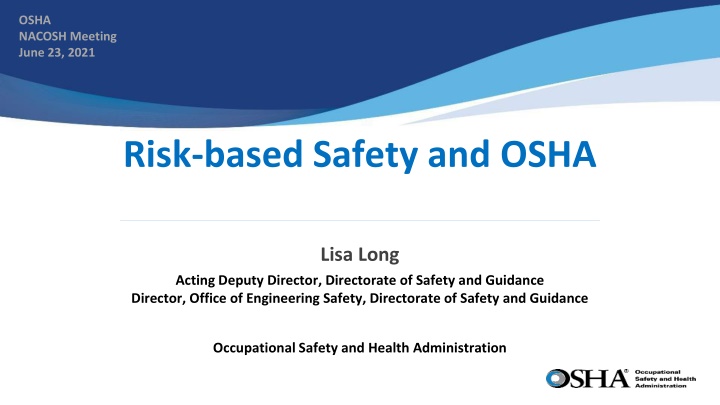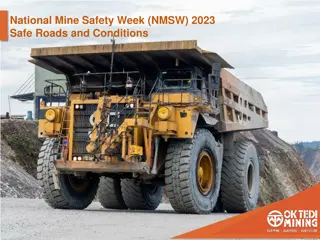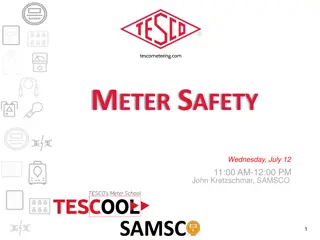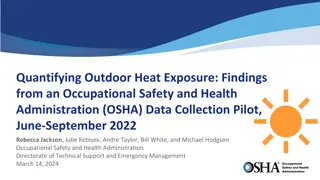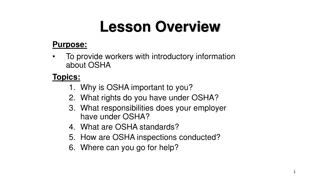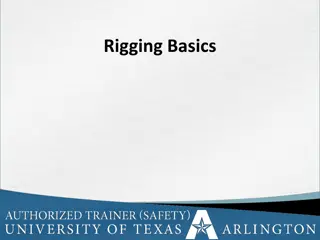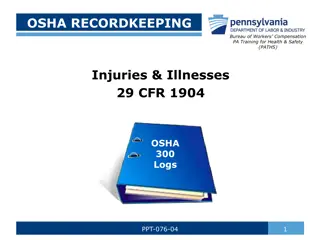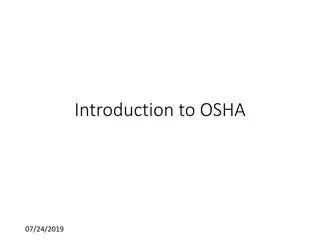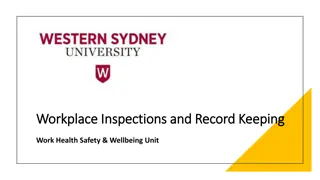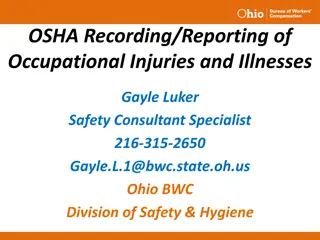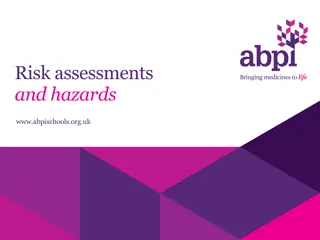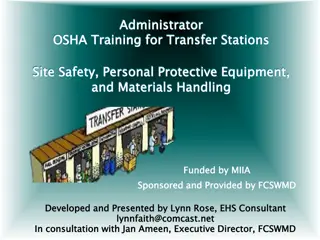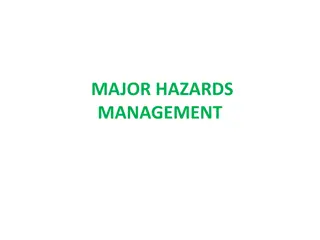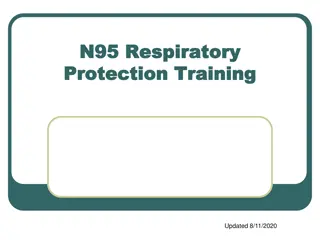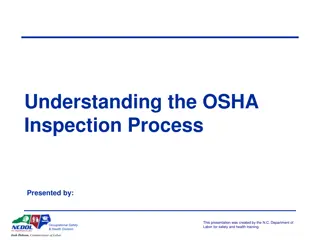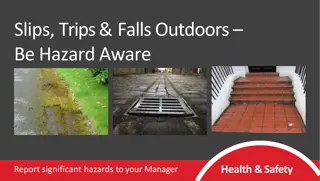Risk-based Safety and Hazards: Understanding OSHA's Approach
OSHA emphasizes risk-based safety to address hazards effectively. Learn about risk management, hazard identification, and the importance of prioritizing risks for a safer work environment. Explore the intersection of risk and safety in industries like aviation and chemical processes. Discover how OSHA considers risk in setting safety standards to protect worker health. Stay informed about injury and fatality data trends to improve workplace safety measures.
Download Presentation

Please find below an Image/Link to download the presentation.
The content on the website is provided AS IS for your information and personal use only. It may not be sold, licensed, or shared on other websites without obtaining consent from the author.If you encounter any issues during the download, it is possible that the publisher has removed the file from their server.
You are allowed to download the files provided on this website for personal or commercial use, subject to the condition that they are used lawfully. All files are the property of their respective owners.
The content on the website is provided AS IS for your information and personal use only. It may not be sold, licensed, or shared on other websites without obtaining consent from the author.
E N D
Presentation Transcript
OSHA NACOSH Meeting June 23, 2021 Risk-based Safety and OSHA Lisa Long Acting Deputy Director, Directorate of Safety and Guidance Director, Office of Engineering Safety, Directorate of Safety and Guidance Occupational Safety and Health Administration
Risk-based Safety Federal Aviation Administration Risk management is a formalized way of dealing with hazards. It is a logical process of evaluation where you weigh the potential costs of a risk against the potential benefits you might receive, if you allowed that risk to stand uncontrolled. (https://www.faa.gov/news/safety_briefing/2019/media/SE_Topic_19- 01.pdf) Center for Chemical Process Safety Risk- based process safety uses risk-based strategies and implementation tactics that are commensurate with the demand for process safety activities, availability of resources, and existing organizational culture to design, correct, and improve process safety management activities. (Guidelines for Risk Based Process Safety, AIChE, 2007) NOTE: With this approach, it is important to emphasize that this does not ignore hazards, but looks for a way to prioritize the risk to focus on the greatest hazards first.
Hazard and Risk Risk ISO 45001 - Combination of the likelihood of occurrence of a work-related hazardous event or exposure(s) and the severity of injury and ill health that can be caused by the event or exposures (Definition 3.21) Hazard ISO 45001 - Source or situation with a potential to cause injury and ill health (Definition 3.19) For Example: Leaving paper or other combustible material near a heater that could lead to a fire and burn an individual For Example: The likelihood a fire starts from the heater and combustibles, someone being injured, and the extent of the injury
Why Think about Risk-based Safety? The rate of serious injuries and fatalities are declining at a slower rate than recordable incidents. Resources are not unlimited. Risk-based approaches recognize human factors in incident prevention Many companies have implemented risk-based safety Many organizations recognize the value of risk-based safety CCPS FAA NASA ASSP
Injury and Fatality Data Fatality Rates per 100,000 FTEs 2006 - 2019 hours-based (Orange) 1992 2006 employment-based (Light Blue) Incidence rates per 100 FTE of nonfatal occupational injuries and illness in private industry, 1992 2019 Data from BLS.gov https://www.bls.gov/opub/btn/volume-9/nearly-50-years-of-occupational-safety-and-health-data.htm, https://stats.bls.gov/iif/oshcfoiarchive.htm#RATES
OSHA and Risk-based Safety OSHA always takes risk into account (i.e., significant risk of material impairment of health) when developing specifications for standards PEL limit determination However, once the specifications are determined and the standards developed many OSHA standards are mainly prescriptive and hazard based Powered Industrial Trucks Hazard Communication A couple issues have performance-based approaches incorporated PSM: includes items such as process hazard analyses WWS
OSHA and Risk-based Safety Some issues are well suited for performance and risk-based approaches LOTO: controlled circuits as EIDs Workplace Violence: hazard evaluations Chemical Management: address PEL specification Risk-based issues can be more difficult to determine compliance OSHA inspectors have a general knowledge base Easier to look for a specific hazard (e.g., handrail height) and address it than evaluate the method and rigor of an assessment, process, or procedure Risk-based can provide more flexibility for employers Risk-based issues can be difficult for small or medium businesses to understand Occupation Exposure Banding https://www.cdc.gov/niosh/topics/oeb/default.html
OSHA SHP and Risk-based Safety Using Leading Indicators to Improve Safety & Health Outcomes Safety & Health Program Maturation Framework Recommended Practices for Safety & Health Programs OSHA #7500 Introduction to Safety & Health Management Revisit SHP and other guidance from the maturation presentation Where could Risk-based Safety fit into the overall plan? Incorporated into standards? Separate guidance document or training? Added into existing guidance? OSHA SHMS https://www.osha.gov/safety-management/hazard-identification
What should OSHA do next? How can NACOSH help OSHA think about hazards and risks? How should OSHA involve stakeholders in this discussion?
www.osha.gov 800-321-OSHA (6742)
